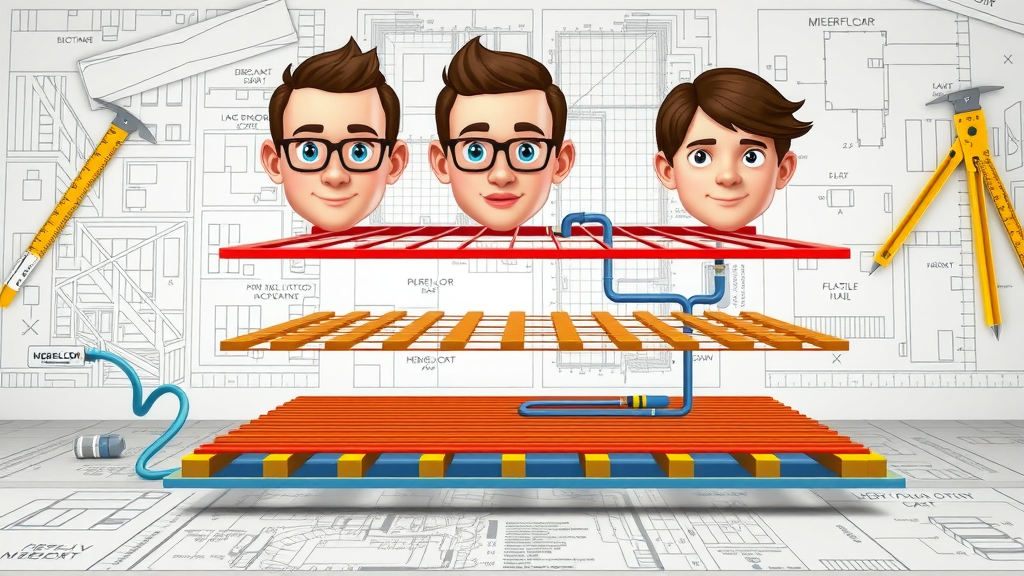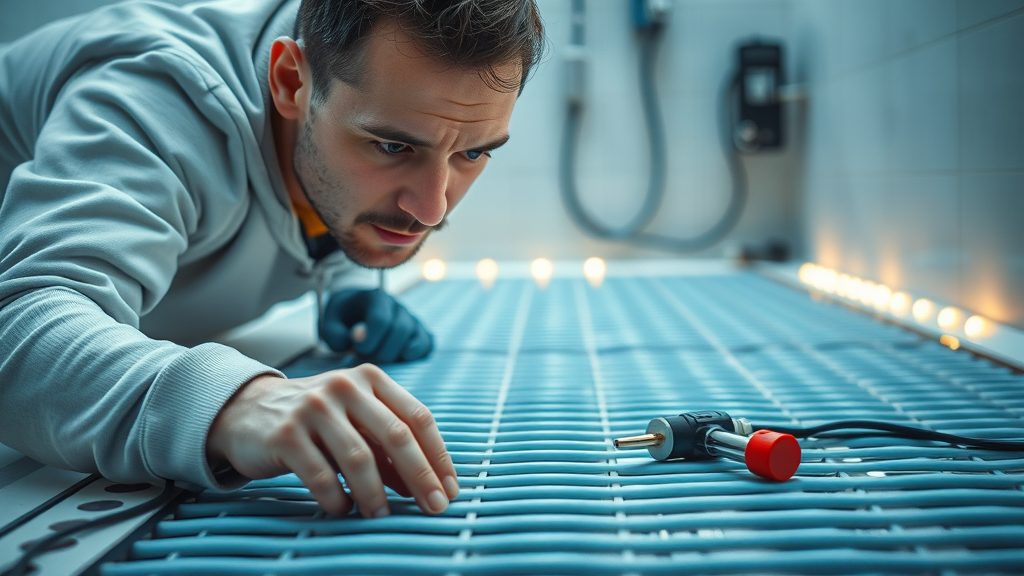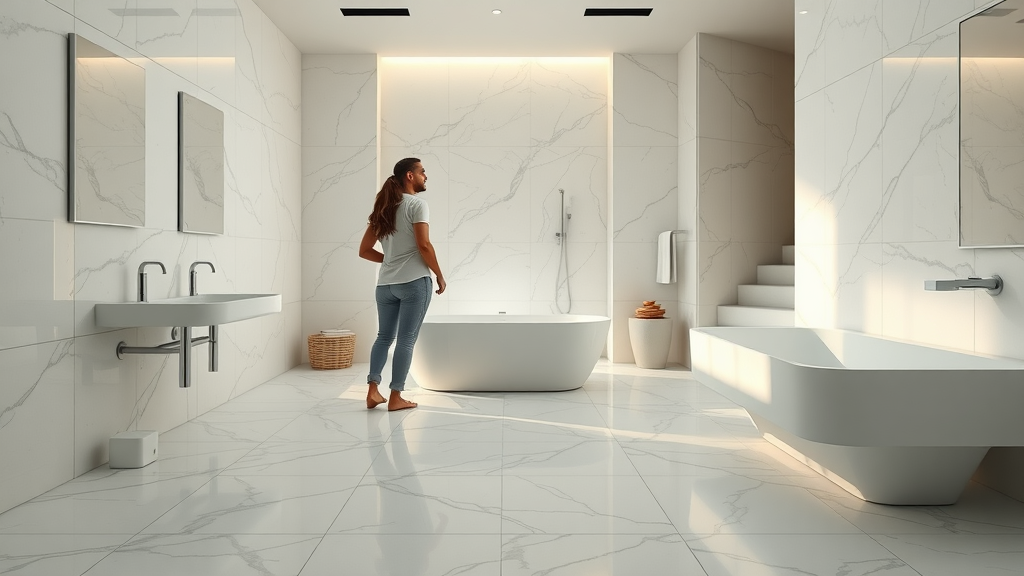- Did you know that underfloor heating systems can reduce heating energy usage by up to 15% compared to traditional radiators? Discover how understanding underfloor heating cost can directly impact your comfort and your wallet.

Exploring Underfloor Heating Cost: The Financial Realities of Modern Floor Heating
- What you’ll learn: An in-depth breakdown of underfloor heating cost, comparison of floor heating systems, key price factors, and substantial long-term savings tips.
If you’re considering an upgrade for your home’s comfort and value, understanding the underfloor heating cost is your first smart step. The real financial outlay can vary widely, but with underfloor heat, you gain big advantages over traditional radiators and forced air systems. This cost isn’t just about the initial outlay; it’s about the efficiency, savings, and enjoyment you get year after year. In this article, we break down what you can truly expect, what influences the total price tag, and how to save the most without giving up luxury.
What makes floor heating so appealing is its ability to offer a consistent, cozy warmth underfoot, leading to improved energy efficiency and even a boost in property value. The choice between electric floor, hydronic systems, or advanced radiant floor heating means weighing upfront cost versus long-term savings. Let’s dive into every aspect of heated floors —from installation costs to practical tips for reducing your energy bills and making informed investment decisions.
Overview of Floor Heating Systems: Floor Heat, Radiant Floor Heat & Heated Floors
- Types of floor heating systems: electric floor, hydronic systems, and radiant floor heating.
- Differentiating between radiant heat vs. traditional heating systems.

There are three main types of floor heating systems: electric floor heat , hydronic systems , and radiant floor heating . Each offers unique cost structures and installation requirements. Electric radiant floor heat involves mats or cables installed beneath the floor surface, making it best for smaller spaces like bathrooms or kitchens. Hydronic systems use water pipes embedded in the floor slab, efficiently warming larger areas and entire homes.
Radiant floor heating differs from traditional heating because it creates a gentle, uniform warmth from the floor up—no more cold tiles in the morning or dust-circulating radiators and forced air vents. With heated flooring , you not only increase the comfort in your living spaces but also open doors to potential energy bill savings, thanks to the system’s optimized heat distribution.
Determining the best floor heating system for your property comes down to the scale of the project, cost per square foot, and whether you’re renovating or building anew. Both electric and hydronic radiant floors are compatible with a wide range of floor coverings, though some materials conduct heat more efficiently than others.
How Underfloor Heating Systems Work and Why It Matters for Cost Efficiency
- The science behind underfloor heating systems and radiant floor heating.
- Comparison: hydronic system vs. electric systems for energy efficiency and savings.
Underfloor heating systems operate by distributing heat evenly across the entire floor surface, ensuring no corner remains chilly. Electric radiant floor systems use wires or mats powered by electricity, delivering fast, controlled warmth ideal for zone heating—think en-suite bathrooms or extensions. In contrast, hydronic floor heating systems circulate warm water through a network of pipes, efficiently covering large open-plan spaces or entire houses.
The key cost-saving advantage of these systems lies in their efficiency . Hydronic systems may have a higher initial installation cost but shine with low running expenses, especially when paired with heat pumps. Electric systems are easier and more affordable to install in smaller or retrofit projects but can lead to higher ongoing electricity usage if used as a primary source for the whole home.
When compared to traditional heating , both electric and hydronic radiant floor options demonstrate superior energy efficiency . They often operate at lower temperatures while achieving the same comfort level, meaning you could see lower energy bills over the long haul.
| Floor Heating System | Installation Cost (£/m²) | Operating Cost | Best For |
|---|---|---|---|
| Electric Radiant Floor | £50-£75 | Medium-High (depends on electricity rates) | Bathrooms, Kitchens, Small Zones |
| Hydronic System | £80-£150 | Low (uses gas boiler or heat pump) | Whole Home, Large Spaces |
| Radiant Floor (General) | £50-£150 | Medium-Low | Versatile (depends on project) |
Installation Cost Breakdown: What Affects the Price of Underfloor Heat?
Key Factors Impacting Underfloor Heating Cost per Square Foot
- Square footage – how size impacts total installation costs.
- Heating system choice: electric radiant floor vs. hydronic system cost breakdown.

The total underfloor heating cost per square foot depends on multiple variables, but size is a major driver: larger areas may seem costlier, yet they often benefit from reduced per-foot pricing, especially with hydronic systems. If you're fitting heated floors across an entire home, a hydronic installation could be more economical in the long run, even with a steeper initial cost.
Electric radiant floor systems tend to have lower upfront installation expenses, making them ideal for targeted areas but not always as budget-friendly for large spaces due to higher operating costs. Hydronic systems feature increased complexity but lower ongoing energy usage, particularly if your home is well-insulated and compatible with energy-efficient heat sources like a modern heat pump.
The type of installation—retrofitting an existing building versus a new build—also influences costs. New builds are generally easier and cheaper to equip with hydronic pipes, while electric mats are often the go-to for quick, less disruptive retrofits.
Labor, Materials, and Other Installation Costs for Heated Flooring
- Material price comparison for various radiant heating options.
- Average labor costs for floor heating installation.
Breaking down your underfloor heating cost reveals the two largest components: materials and labor costs . Electric floor heating mats are relatively simple to install and often cheaper on the material side, but you may need to factor in costs of controllers and electrical upgrades. Hydronic radiant floor systems require not just pipes but insulation, a dedicated heat source (like a boiler or heat pump), and specialist installation expertise—raising both material and labor cost.
On average, you can expect to pay between £50 and £75 per square metre for electric systems, with labor costs accounting for a significant portion if professional installation is needed. Hydronic systems run between £80 and £150 per square metre as a total, but their enhanced energy efficiency can deliver real savings over time, especially for multi-room or whole-home installations.
Additional installation costs can include preparation work (removing old flooring, leveling surfaces), insulation upgrades, and any changes needed to floor heights or thresholds. Efficient planning and working with experienced contractors can help minimise surprises and keep your underfloor heating system project within budget.
Underfloor Heating Cost vs. Alternative Heating Systems
Cost Comparison: Underfloor Heat vs. Traditional Radiators and Forced Air
- Long-term savings: radiant floor heating vs. radiator systems.
- Energy consumption and efficiency analysis.
When weighing underfloor heating cost against alternative systems like conventional radiators and forced air, it’s important to look at both installation and ongoing running expenses. Traditional radiators often require less upfront investment but tend to be less energy-efficient and distribute heat less uniformly, resulting in higher long-term energy bills and colder spots throughout your home.
In contrast, radiant floor heating and heated floors excel in both energy use and comfort. Radiant floor heat delivers warmth where you need it most while maintaining lower operating temperatures, leading to energy savings over time. Hydronic floor heating, in particular, stands out for its energy efficiency , especially when coupled with green technologies like solar panels or heat pumps.

| System Type | Typical Install Cost (£/m²) | Operating Cost (Annual) | Lifespan (Years) |
|---|---|---|---|
| Radiant Floor Heat (Electric) | £50-£75 | £300-£500 (medium) | 25+ |
| Radiant Floor Heat (Hydronic) | £80-£150 | £200-£350 (low) | 35+ |
| Traditional Radiators | £40-£70 | £400-£700 (high) | 15-25 |
Calculating Your Underfloor Heating Cost by Square Foot and Room Type
- Cost scenarios—bathrooms, kitchens, and whole-home heated flooring.
- Variables affecting underfloor heating system pricing for each application.
The price of underfloor heating can vary based on which parts of the home you want to heat. Heating a small bathroom or kitchen often comes at a lower total cost, frequently between £500 and £1,500, while a large open-plan space or whole-house system can run from £7,000 up to £15,000+, depending on square footage and system complexity.
Bathrooms and kitchens are ideal for electric radiant floor systems, since installation is less invasive and running costs are only applied to limited use areas. For entire ground floors or large open spaces, a hydronic system is typically more cost-effective in the long term. Consider the room’s insulation, floor covering, and frequency of use—these all affect total underfloor heating system pricing.
Finally, remember that special architectural features, unusual room layouts, or access challenges can drive up installation cost. Consulting a floor heating expert ensures an accurate, scenario-specific quote for your unique project.
How to Save Money on Underfloor Heating Cost: Expert Tips
- Sourcing affordable and efficient electric radiant heat systems.
- DIY installation: what saves and what risks to avoid.
- Leveraging energy efficiency to cut ongoing costs.

Looking for the best ways to save on your underfloor heating cost ? Start by comparing electric radiant heat system suppliers and considering off-the-shelf kits for small spaces. These can be a great choice for DIYers, reducing labor costs. However, for large or multi-room installations, professional fitting is strongly recommended for safety and performance.
Another proven way to save is through improved energy efficiency . Invest in high-quality insulation beneath the heating system; this keeps more warmth in your home, reducing the need for high energy input and slashing running costs. Smart thermostats, programmable zones, and regular system maintenance also yield significant savings over time.
If you are eligible, check for government incentives for efficient home upgrades—they can offset both purchase and installation cost. Always ask suppliers about warranty and service coverage; a well-supported system will offer peace of mind and lower lifetime expenses.
The Benefits of Heated Floors: Beyond Underfloor Heating Cost
- Health and comfort advantages of radiant floor heat.
- Improved indoor air quality and uniform heat distribution.
- Property value enhancement with underfloor heating system installation.
Beyond straightforward underfloor heating cost considerations, radiant floor heat delivers outstanding health and comfort perks. Because the warmth radiates from the floor up, you’ll enjoy evenly distributed temperatures with no cold zones—a welcome luxury, especially in bedrooms, living areas, and bathrooms.
Unlike traditional heating, which often stirs up dust and dries out indoor spaces, heated floors contribute to better indoor air quality and a more soothing living environment. Silent operation and a discreet design mean no bulky radiators taking up wall space—just seamless warmth and aesthetic freedom for your interiors.
Installing underfloor heating can also boost your property’s value and market appeal. Modern buyers appreciate energy-efficient, easy-to-control heating, so investing in a quality floor heating system can deliver returns both while you live in your home and when you sell.
Real Homeowner Quotes: Saving Big with Underfloor Heating
"Switching to radiant floor heating reduced our energy bills by nearly 20%." – Homeowner in Manchester

Understanding Electric and Hydronic Underfloor Heating Systems
Electric Systems: Benefits and Typical Underfloor Heating Cost
- Installation cost, operating efficiency, and best-use scenarios for electric floor heating.

Electric underfloor heating systems are known for their straightforward installation, making them popular in renovations and projects with limited construction time. The upfront installation cost typically ranges from £50 to £75 per square metre. Electric systems respond quickly, enabling instant comfort in bathrooms, en suites, or kitchens where rapid heat-up times are valued.
Operationally, electric systems convert nearly all consumed electricity into heat, but the higher cost of electricity compared to gas means whole-home running costs can mount if used continuously. For targeted areas and supplemental heat, however, electric radiant floors are hard to beat for convenience, speed, and comfort.
Best-practice installation including good insulation and precise controls can maximize efficiency and minimize waste, keeping ongoing costs manageable.
Hydronic Systems: Pros, Cons, and Cost Outline
- Major differences in installation costs, longevity, and repair needs compared to electric radiant floor systems.
Hydronic underfloor heating systems feature heated water circulated by pumps through pipes set beneath the floor. The main pro is low ongoing running costs, particularly when used to heat larger or whole-home areas. While installation is more complex—costing £80 to £150 per square metre—the efficiency during daily use is unmatched, especially in homes with strong insulation and renewable energy sources.
Longevity is a major selling point: Many hydronic systems last upwards of 35 years with minimal maintenance. Repairs can be more challenging and disruptive if needed, but the quality and reliability of modern installations ensure most homeowners experience few issues.
Compared to electric radiant floor , hydronic systems require more upfront investment but reward you with much lower energy bills and superior comfort in large, open, or frequently used spaces.
People Also Ask: What is the average cost for underfloor heating?
- The typical underfloor heating cost in the UK ranges from £50 to £150 per square metre, with factors such as system type and property size playing critical roles.

Most UK homeowners can expect to pay between £50 and £75 per square metre for electric radiant floor systems, and £80 to £150 for hydronic floor heating. The total cost will depend on the project size, chosen system type, installation complexity, and any supplemental building work needed for insulation or electrical upgrades.
For a typical bathroom, that puts installed cost between £500 and £1,500; for a large open-plan living space, between £5,000 and £10,000+ is possible, depending on finishes and system sophistication.
People Also Ask: What is the downside of underfloor heating?
- Underfloor heating systems may involve higher upfront installation costs and slower heating response times compared to radiators.
The most commonly cited downside of underfloor heating is the initial outlay, which is higher than standard radiator installs. In addition, both electric and hydronic radiant heat can respond more slowly to temperature changes compared to forced air or radiators, meaning it may take longer to heat up a room from cold.
For existing houses, retrofitting involves floor level alterations and some disruption; however, the comfort and efficiency gains generally make this worthwhile for many homeowners.
People Also Ask: Is underfloor heating worth the cost?
- For most homeowners, the efficiency, comfort, and increased property value typically justify the average underfloor heating cost.

Most find underfloor heating well worth the investment. The added comfort, energy savings, and boost to property appeal often outweigh the higher installation cost . Many homeowners enjoy lower energy bills and a warmer, healthier living space, making the upgrade both a luxury and a practical choice.
The value is especially clear in homes where comfort and long-term savings matter most, such as busy family homes or properties seeking a high resale value.
People Also Ask: Is it cheaper to run underfloor heating or radiators?
- Radiant floor heating systems are generally more energy-efficient and can be cheaper to operate long-term compared to traditional radiator systems.
Radiant floor heating tends to use less energy to deliver the same level of comfort as radiators, especially in well-insulated homes. Hydronic systems in particular can be very cheap to run when paired with efficient boilers or heat pumps, significantly lowering your ongoing energy bills.
While electric radiant systems are more expensive to run as a primary heat source, they can still offer savings by targeting heat only where you need it—another plus for smart home comfort management.
Frequently Asked Questions – Underfloor Heating Cost and Floor Heating Systems
-
How long does it take to install a radiant floor heating system?
Depending on the system type and square footage, installation usually takes 1-3 days for a bathroom and 1-2 weeks for a whole home. -
Are floor heating systems safe for all flooring types?
Most heated floors work with tile, stone, wood, laminate, and some carpets. Always check compatibility before installation. -
Do heated floors require ongoing maintenance?
Electric radiant floors require almost no maintenance. Hydronic systems benefit from annual checks to ensure pump and pipe health. -
What are some popular brands of electric radiant floor heating?
Top brands include Warmup, Nu-Heat, DEVI, and Uponor—each offering reliable electric and hydronic floor heating options for UK homes.
Watch our short explainer video that visually compares installation and running costs of electric and hydronic underfloor heating versus radiators, including animated infographics and system cutaways. (Length: 2-3 minutes.)
Explore the differences, benefits, and key cost factors between electric and hydronic radiant floor heating systems. Learn which is right for your renovation or new build.
Top 10 Tips for Reducing Your Underfloor Heating Cost
- Install high-performance floor insulation to retain heat.
- Use smart heating controls and programmable thermostats.
- Choose cost-effective systems for the space—electric for small rooms, hydronic for large.
- Compare multiple installers to get the best labor rates.
- Take advantage of government rebates for energy efficiency upgrades.
- Schedule regular system checks and maintenance.
- Avoid poorly insulated floors, which increase operating costs.
- Buy directly from trusted manufacturers when possible.
- Consider hybrid heating systems for optimal energy use.
- Review your property’s energy performance to identify savings opportunities.
Key Factors Influencing Installation Cost and Running Costs
- Overview of core considerations: insulation, system type, property layout, floor covering, and heating controls.

The main influences on underfloor heating cost include not just the square footage and system choice but also your home’s insulation quality, room layouts, flooring material, and the control technology you select. High-grade insulation is essential—it reduces energy waste and lets your heated floor perform at peak efficiency at lower temperatures.
Large open-plan rooms often justify the investment in hydronic underfloor heat, while small or irregular spaces suit electric mats that can be tailored to the layout precisely. Choose floor coverings with strong heat conductivity, like tile or stone, for optimal system performance, and avoid thick carpets or underlays that trap warmth.
Smart thermostats and programmable zones make it easier than ever to optimize energy use and comfort—boosting savings and maximizing your heating system’s value.
Underfloor Heating Cost: Myths vs. Reality
- Common misconceptions debunked with facts about radiant heat and floor heating system expenses.
A widespread myth is that underfloor heating cost is always out of reach for the average homeowner. In reality, modern systems cater to every budget with scalable options. Another misconception is that radiant heat only suits new builds—retrofitting is often straightforward, particularly with electric options.
Many also believe underfloor heat is less responsive; while slower than forced air, today’s systems reach target temperatures reliably and efficiently. Finally, ongoing maintenance is minimal for electric and routine for hydronic systems—not the hassle some expect.
Understanding the facts lets you invest in the right solution for your comfort and budget.
Maximizing Energy Efficiency and Comfort with Underfloor Heating
- Best installation practices to ensure long-term savings on underfloor heating cost and optimal home comfort.

To get the most out of your floor heating system , invest in proper underfloor insulation and use programmable thermostats or smart controls. Align installation with optimal floor coverings for heat transfer, and choose the best system type for your home’s unique needs.
Periodic maintenance, professional commissioning, and seasonal check-ups keep both electric and hydronic systems running efficiently—helping you enjoy years of warmth at the lowest possible running cost.
Comparing Floor Covering Options and Their Impact on Underfloor Heating Cost
- Tile, wood, laminate, and carpet—how materials influence system efficiency and overall cost.
Your choice of floor covering directly affects the efficiency of your heated floors. Tile and stone are top performers, offering superior heat transfer and quick warming. Wood and engineered flooring work well with modern low-temperature systems as long as correct installation guidelines are followed.
Laminate options are compatible with most floor heating setups, while carpets and thick underlays may reduce system responsiveness and increase energy use. Always select coverings approved for underfloor heating to safeguard your investment and achieve the best comfort.
Discuss your preferred materials with your installer in advance—they can recommend system settings and designs tailored to your chosen finish.
Is Retrofitting Existing Properties with Underfloor Heating Worth the Cost?
- Challenges, typical expenses, and long-term benefits of installing floor heating systems in existing homes.
Retrofitting a property with underfloor heating involves extra steps, such as lifting floors and adding insulation, which can increase the total installation cost . However, for many homeowners, the long-term comfort, efficiency, and boost in property value make this investment worthwhile.
Electric mats are the simplest retrofit option, with minimal floor height changes. Hydronic systems are more involved but add value in large, frequently used spaces. Either way, working with a skilled installer minimizes hassle and ensures the biggest possible return.
Ultimately, retrofitting is a practical way to transform your home’s comfort and running costs—just plan for the extra construction time and temporary disruption during installation.
Essential Maintenance Tips to Protect Your Underfloor Heating Investment
- Routine care for both hydronic systems and electric radiant floor options to minimize future cost and extend lifespan.

Keeping your underfloor heating system working perfectly requires only simple annual checks. Electric systems need little more than occasional controller or sensor calibration, while hydronic setups should be inspected by a pro once per year to confirm pressure levels and identify leaks.
Never ignore warning signs like cold patches or fluctuating temperatures—quick intervention reduces repair costs and extends your system’s life. Keep user manuals and installer contacts handy for fast troubleshooting.
Staying proactive with maintenance ensures you enjoy all the savings and comfort your heated floor can provide for decades.
Expert Insights: Installation Costs, Value Addition, and Lifespan of Heated Flooring
"Properly installed underfloor heating systems can last upwards of 35 years, making them one of the most durable modern home upgrades." – Heating Specialist
Investing in the right floor heat or radiant floor system doesn’t just save you money—it gives your property long-term value and reliable performance few modern heating solutions can match.
When comparing the lifecycle costs and benefits, underfloor heating stands out as a smart, future-ready choice for savvy homeowners.
Final Thoughts: Making the Right Choice for Your Underfloor Heating Cost
- Recap: balancing initial installation costs with long-term energy efficiency, value, and comfort.
- Ready to reduce your underfloor heating cost and maximize your investment?
Take the time to compare options, prioritize insulation and controls, and choose professional installation for the best results. Comfort and savings go hand in hand when you invest wisely.
Consult the Experts – Take the Next Step
- For expert help or advice visit Peak Underfloor Heating at https://peakunderfloorheating.com/
Sources
- U.S. Department of Energy – https://www.energy.gov/energysaver/radiant-heating
- Which? – https://www.which.co.uk/reviews/home-heating-systems/article/underfloor-heating-explained-aUStg8C6CT3n
- Warmup UK – https://www.warmup.co.uk/underfloor-heating
- Peak Underfloor Heating – https://peakunderfloorheating.com/
- Homebuilding & Renovating – https://www.homebuilding.co.uk/advice/the-cost-of-underfloor-heating
When considering underfloor heating, it’s essential to understand the associated costs and benefits. The article “Underfloor Heating Cost: What to Expect and Save Big” provides a comprehensive breakdown of installation expenses, system comparisons, and long-term savings strategies.
For a detailed analysis of radiant floor heating costs, including per-square-foot pricing and factors influencing installation expenses, refer to the article “How Much Does Radiant Floor Heating Cost? (2025)” on HomeGuide. ( homeguide.com ) Additionally, the “Underfloor Heating Cost Breakdown 2025” by Checkatrade offers insights into the average costs in the UK, highlighting differences between electric and wet systems. ( checkatrade.com )
If you’re serious about installing underfloor heating, these resources will provide you with the necessary information to make an informed decision.
 Add Row
Add Row  Add
Add 









Write A Comment